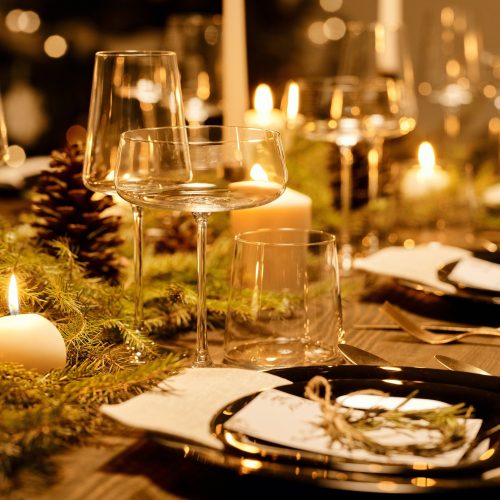
A Beginner’s Guide to Spanish Christmas Foods
Dear Vicky,
It is that time of the year again and Navidad, or Christmas, is just around the corner. As a traditionally Catholic country, this is an important holiday for many people in Spain. However, if you have spent any sort of time in Spain or talking with Spanish people, you will also know that traditions in this country almost always have an element of food to them. Spending time eating and drinking is incredibly important to Spaniards. The only thing that might be more important than food is eating it together with the family.
Note: Spaniards traditionally celebrate Christmas on what we call Christmas Eve, which you can read more about in this post.
Last year it was hard to celebrate family Christmases because of Covid and due to the current rise in cases, we might not see much improvement this year either. Still, Christmas dinners (and lunches) are still going to be important to people; they will just sometimes be smaller and quieter than before. What we cannot imagine suffering is the menu. In fact, after two long years of this current situation, we might find that people are looking for something to celebrate and will go a bit over the top with things.
In this article, we want to talk about how Spaniards eat around Christmas time and share some of our friend’s favorites with you. At the same time, we want you to keep in mind that Spain is incredibly diverse and the traditions will vary from region to region. If you read Spanish and want to learn more, we would recommend checking out this post from El Español.
In addition, we want to keep in mind that every family has their own food traditions. While general celebrations (which you can learn more about in this post) might be similar around the country or in specific regions, food specialities will often differ from household to household. Every mother/grandmother will have her own recipes and each family will have their own twist on things. One of the things we heard from every person we spoke with is something along the lines of “This isn’t typical, but in my family…”. Therefore, please keep in mind that this is subjective and will most likely change depending on who you ask.
If you are lucky enough to be invited to a friend’s or family member’s house for Christmas (maybe you are spending Christmas away from home), be mindful that many families go all out for this holiday. They will often spend more money on food and drink than many other events during the year. Do your best to enjoy the time with the family and make sure you are respectful and interested in the experience. Remember, sharing food with Spaniards is one of their ways to invite you into the family.
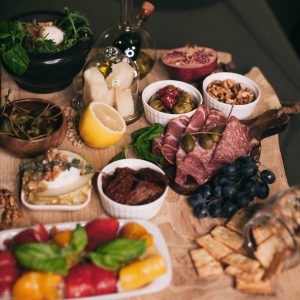 The Appetizers
The Appetizers
Before the meal actually starts, you can count on having an array of things to picar or to pick at while you are waiting. Some of the more traditional things to see are:
Quesos: Cheeses are made all throughout Spain and are a big part of the dining culture. Before the meal comes to the table, you can expect a couple of different varieties to snack on. You can find more about Spanish cheeses in this post—we highly recommend trying them out!
Jamón: We dive into Spanish cured ham in this blog post and you can definitely expect that you will find some jamon at various points of your dinner. In fact, we joke that, oftentimes, Spaniards even try to serve jamón to vegetarians because they see it as an essential part of dining, not as a meat.
Chorizo / Embutidos: In addition to the jamón, you will find that many people eat chorizo or other cured sausages during the appetizer phase of the dinner. They are oftentimes local and of specific importance to the family.
Aceitunas: It might be such a basic thing, but there is something about Spanish olives that are just special. In fact, we have friends that didn’t like olives before moving to Spain and were converted by the Spanish ones! You will find that every family has their preferences and learning why those olives ‘are the best’ is a great way to learn more about Spanish food.
Bread or other bread-like products: To accompany all of the above, you will usually have some French bread or little dried breadstick-like snacks called picos. Be careful of filling up on these, no matter how delicious they are though because there is a lot more food to come.
After the grazing round, you will usually have a couple more platos or rounds of dishes. In some families, the food will all be served together but it is not uncommon to still maintain the structure of proper courses like you would have in a restaurant. Here are some different things you might see on the table (in no particular order)
Soups or Stews
It is pretty common to have a soup or stew dish either as part of the main meal or in between courses. The types of soups / stews you will find will vary by region and will mostly be meat-based, although you can find some fish-based ones as well. As this is part of a whole meal, many times this soup will be quite light and only an accompaniment to the rest of the meal. As this is a cooler time in Spain (it does get downright cold in Spain too) a warm soup is a great way to get cozy as well.
One of our friends says that a must have on his family’s table is caldo (de jamón) con huevo cocido y jamón or a light stock made out of ham with boiled egg and ham in it. The stock would be like that of a chicken noodle soup and could also have potatoes or small noodles in it. This dish though is usually quite basic and used as a light starter for a heavier main meal.
The Fish and Seafood
Depending on the region you find yourself in, either meat or fish will play the starring role. We see that in many parts of the country, it is common to see different types of white fish that are baked whole in the oven (maybe with potatoes or maybe just alone). These fish can also be served alongside different types of seafood such as clams. If the region you are in is especially fond of seafood, you might even see this come out in the appetizer round as well.
Two different friends (from different regions) also said that they had prawns (langostinos) or shrimp (gambas) despite this not being a ‘typical’ Christmas food. As these are usually more expensive foods, it makes sense that they are something you would see on a Christmas table as they are not so common the rest of the year.
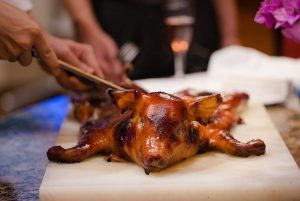 The Meat
The Meat
Either instead of or in addition to the fish (depending on the region or the family), you will usually also have some sort of meat. It is not uncommon to see beef, pork, turkey, etc. on the table at this time of the year and families will usually pick their favorite or most traditional meat. In some regions of Spain, it is also quite common to have cochinillo or a small pig baked until its skin is crispy.
While the friends we asked about this have quite different traditions when it comes to meat, it is something that is always on the table. One friend said that in her family they usually have meat roasted in the oven with different kinds of sauces. Another friend talked about how they usually have beef with a sort of sweet egg yolk treads on top.
Other dishes
While we don’t have much in the way of vegetables on this list, you may find options in some regions of Spain. While this might not feel like it is the most healthy way to eat your way through the holidays, It is typical just to eat a lot of fish and meat over Christmas, so if you are vegetarian, you will want to let your hosts know.
Another thing one friend of ours mentioned is that in her family they eat canalones or stuffed pasta in the days between December 24th to the 26th. This dish is very common in the region of Cataluña and canalones are often filled with meat or fish stuffing as well.
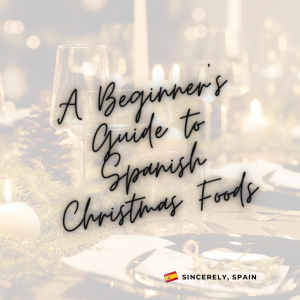 Drinks
Drinks
As it is a festive time of the year, be prepared for your hosts to open a couple bottles of wine and some champagne or its Spanish equivalent, cava. While drinking during the festivities is not required, it will probably be expected, so if you would prefer to drink something non-alcoholic, make sure to let your host know or bring it along yourself.
This is just touching the surface of what you will find on the table during the Christmas holidays in Spain but we hope you have found it useful. Like we said at the beginning, food is very important to Spaniards and the Christmas holidays is a time where you can see this clearly in the way people eat, drink, and socialize. If you have the chance to experience this for yourself, we believe you will enjoy it very much.
If you have experienced a Spanish Christmas dinner yourself, let us know your favorite part in the comments!
Feliz Navidad,
Sincerely,
Spain


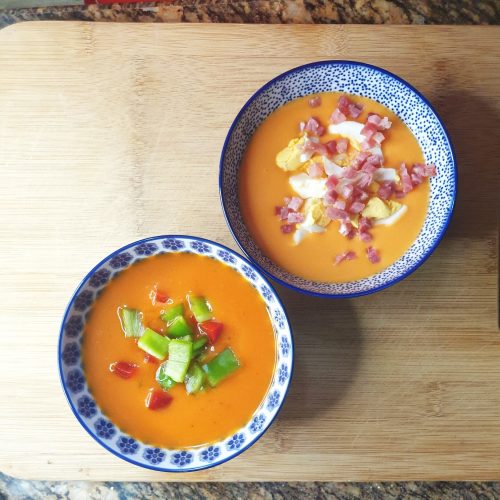
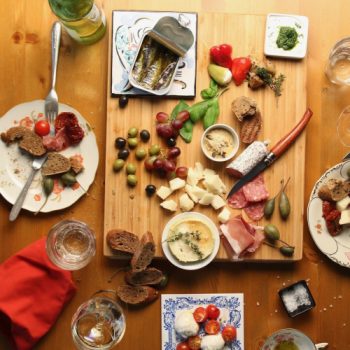
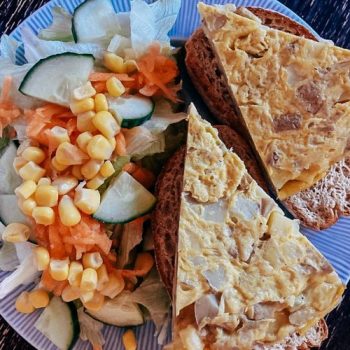
2 Comments
Javier
That’s the time of the year when we get to celebrate with our relatives. I love cordero asado on Boxing Day, and sea food for Christmas Eve. THanks ladies for sharing this info about my countr!
Claudia
Thanks for sharing your favorites Javier!
Wishing you the most beautiful holiday season!
Sincerely,
Dani and Claudia